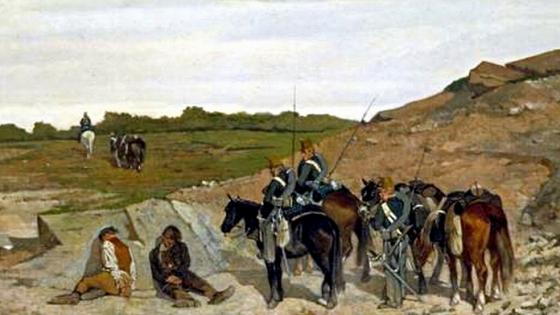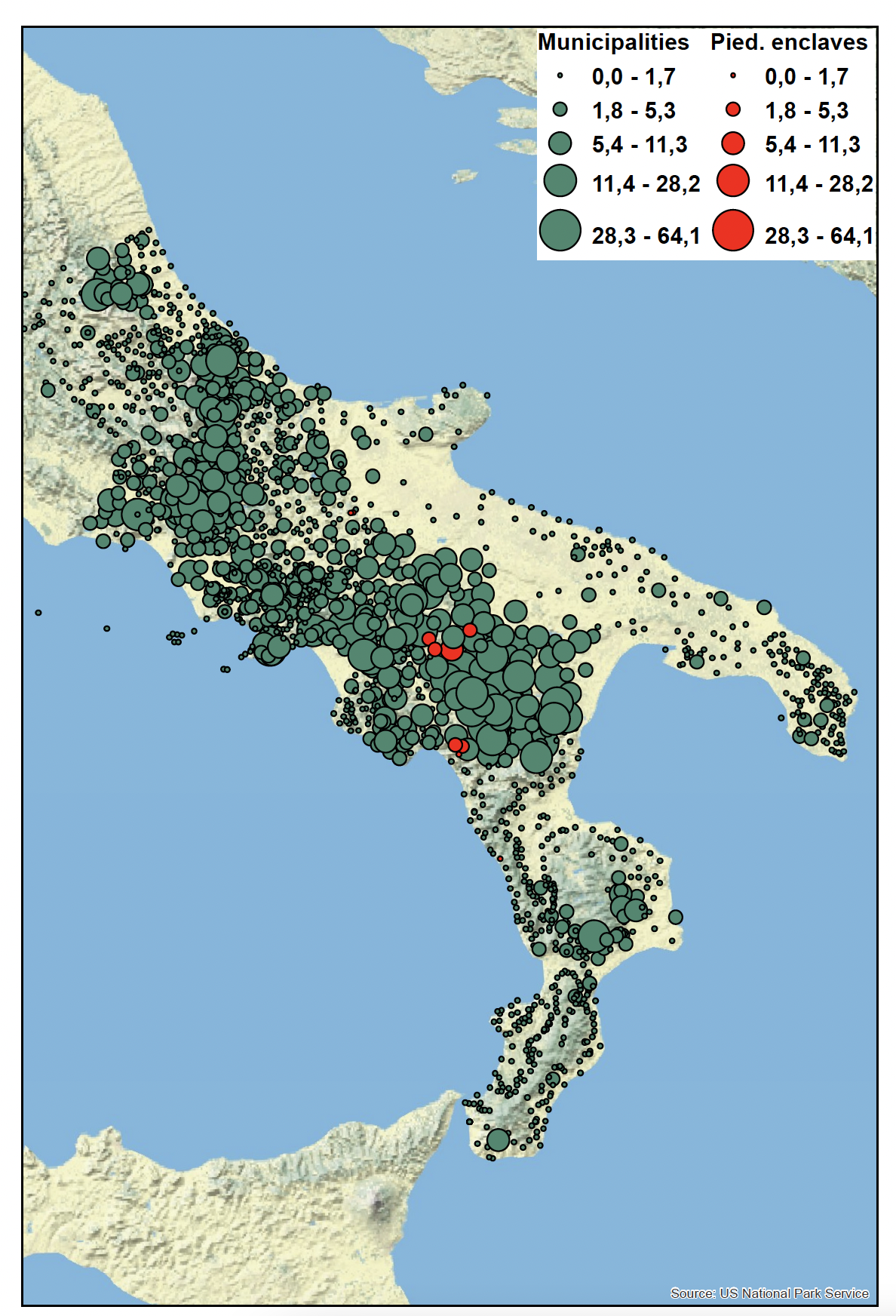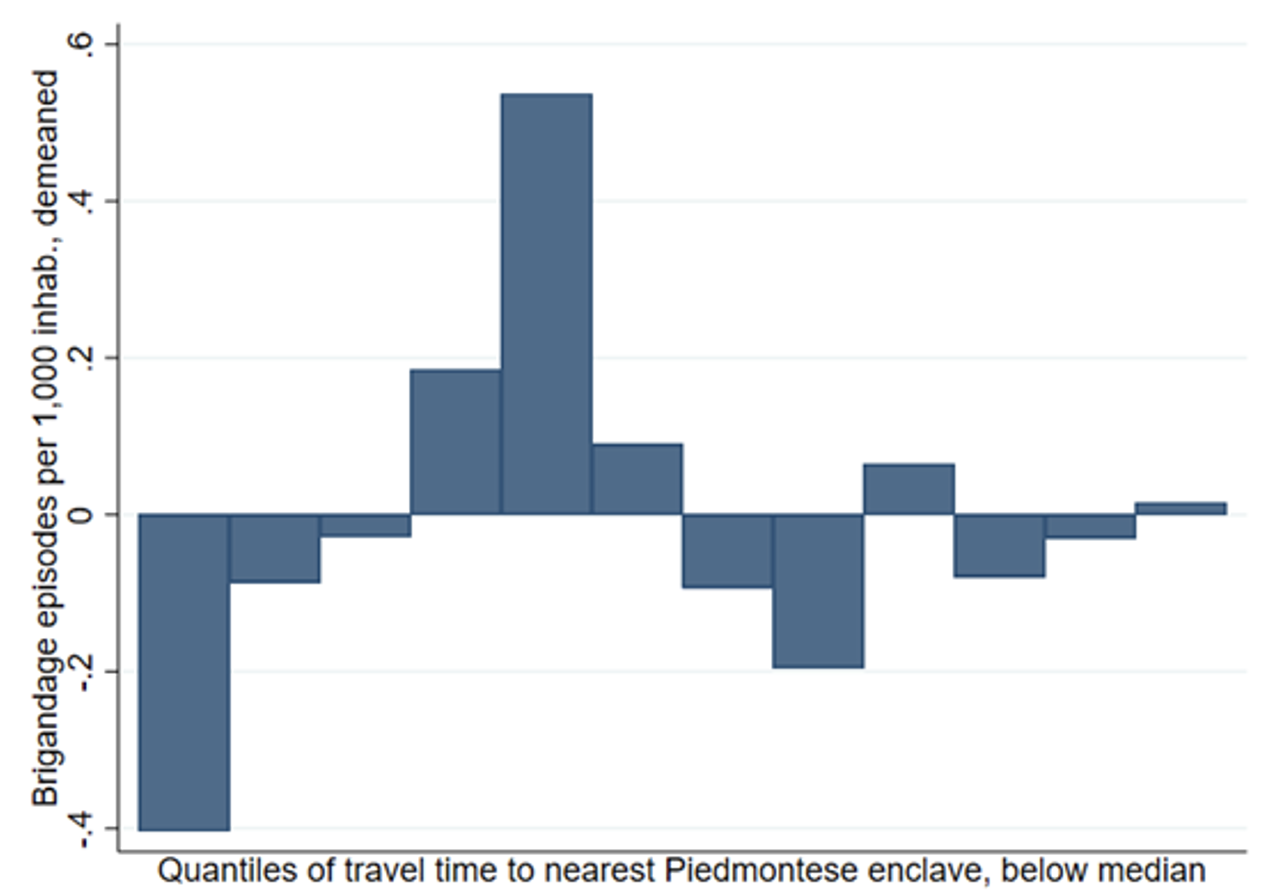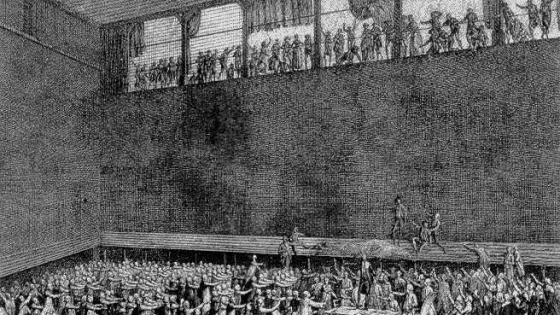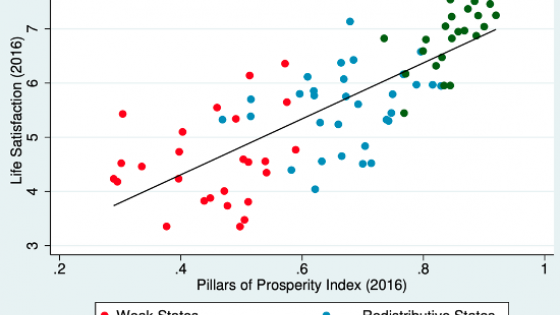Successful state formation processes, through which institutional structures performing the basic functions of the state arise and are extended to the national territory, are crucial for the development of well-functioning institutional apparatuses. In modern nations, institutions often bear the mark of state formation processes started in previous centuries (Chambru et al. 2022). Indeed, issues still relevant to the current political debate in many countries contain elements that may be traced back to past ‘flaws’ in such processes (Tilly 1975).
Of particular interest are the cases in which state building encountered resistance by local communities, often in conflictual and even violent ways. The ensuing unrest (and government repression) might induce lower trust, with negative consequences on social and economic outcomes (e.g. Tabellini 2010). Several studies underlined how violence can be detrimental to state building and have a negative impact on state capacity (Besley et al. 2021, Ch et al. 2019).
In a recent paper (Lecce et al. 2022), we investigate patterns of violent reaction against state formation. To this end, we study the annexation of southern Italy into the new Italian kingdom during the national unification process of the 1860s. This sparked a wave of violent popular unrest, known as brigandage, that spread across southern communities and lasted up to a decade in certain areas. Both the unrest and its repression are likely to have negatively affected the Italian state-building process in subsequent years (e.g. Accetturo et al. 2017). The main advantages of this setting are the transparency of the occurrence of a state formation process (with a conscious state building effort and a massive institutional transplantation) and the possibility to measure the intensity of brigandage at the level of municipalities, the smallest administrative units.
Most importantly, throughout the centuries, several areas of southern Italy have been settled by non-Indigenous groups, creating clusters of municipalities with distinctive linguistic and cultural identities. Among those, at least ten municipalities had been established in the Middle Ages by settlers from the Piedmontese area (marked in red in Figure 1). And, among existing regional states, Piedmont was the promoter of the Italian state building process of the 1860s.
Figure 1 Brigandage intensity in southern Italy, 1861-70
Notes: The map shows all municipalities in continental southern Italy as of 1861. The size of the marker reflects the intensity of brigandage (number of episodes per 1,000 inhabitants). Communities of Piedmontese descent (“Pied. enclaves”) are marked in red and their names indicated for each cluster.
Figure 1 shows the distribution of brigandage episodes and the location of the Piedmontese communities. Almost all Piedmontese communities were located in medium to high brigandage areas, especially the clusters in Basilicata (the second and third ones from north to south). These communities were not brigandage-free, but they and their immediate neighbours were significantly less stricken by brigandage episodes than municipalities just outside their immediate neighbourhood, which display in fact more brigandage than the average municipality. The pattern is clearly visible in Figure 2, where brigandage intensity is plotted against a measure of distance from the nearest Piedmontese community. Brigandage is represented in deviation from provincial averages to difference out the average level of brigandage in the area.
Figure 2 Brigandage intensity and distance from Piedmontese communities
Notes: Average brigandage incidence at the municipal level over quantiles of distance from the closest Piedmontese enclaves (from 0 to the median value, controlling for province fixed effects (provinces were the coarsest administrative subdivision). Distance is measured by the time required to travel to the nearest enclaves according to the method by Özak (2010): each bin corresponds to roughly two hours of travel time, or 10 kilometres. The sample includes the Piedmontese enclaves themselves, but all results hold if they are excluded.
Conditional on observable characteristics, Piedmontese communities and their closest neighbours display a lower number of brigandage episodes compared to the surrounding municipalities. We estimate that doubling the distance from the closest Piedmontese enclave is associated with a 13% increase in the expected incidence of brigand uprisings. Consistently with the patterns in Figure 2, we find that the relationship between distance from the Piedmontese enclaves and brigandage intensity is highly nonlinear, being detectable only among municipalities located within a 10-hour walking distance from the nearest Piedmontese enclaves. Such effect is robust to a wide variety of model specifications and additional controls. In the paper, we show that it is not attributable to pre-unification differences in socio-economic variables, or to other dimensions along which Piedmontese enclaves differ from other municipalities.
One natural question to ask is why we detect such an effect. The local nature of the effect possibly unveils a role played by frequent interactions between the population of neighbouring municipalities and the inhabitants of Piedmontese communities, which may have led to the spreading of cultural traits from the latter to the former. After ruling out several possible economic and institutional factors, we take our measure of distance from areas of Piedmontese ancestry as a good indicator of cultural distance from Piedmont. Our results support the hypothesis that cultural proximity to Piedmont favoured the acceptance of the new rulers and of the new institutional framework, reducing the motives for rebellion.
We explore two possible mechanisms by which cultural proximity might generate such variation in the intensity of the reaction to the Italian unification. The first is a social identification mechanism, and it pertains to the identity of the new rulers. The beginning of the unification process might have heightened local cultural identity, in ways similar to those described by Bazzi et al. (2018, 2019), Fouka (2020), and Dehdari and Gehring (2022), and a consequent sense of shared identity by Piedmontese enclaves to the Piedmontese descending into southern Italy. The process of social identification mitigates the intensity of brigandage in and around Piedmontese enclaves by increasing the perceived legitimacy of the new rulers, by inducing better expectations about the new government’s actions, or simply by imposing a disutility of fighting individuals with similar origins. In other words, communities of Piedmontese ancestry may have had a more favourable attitude toward the new Piedmontese rulers before the most intense phase of the state formation process began. An indication comes from a different data source: using lists of men who voluntarily joined General Garibaldi’s Italian unification campaign of 1860, we provide evidence that municipalities closer to Piedmontese enclaves had higher participation rates in such initiative.
A second potential mechanism is a clash between local values and the content of specific Piedmontese institutions imposed after the annexation. Acceptance of the new set of institutions may depend on their ‘goodness of fit’ with the cultural traits of the recipient communities (Dryzek, 1996, De Jong and Mamadouh 2002, Lecce and Ogliari 2019). In the context we analyse, cultural proximity could have made Piedmontese enclaves and nearby communities more in tune with some of the transplanted institutions. To make a specific example, the anticlerical content of the Piedmontese laws might have been less in contrast with local social norms than in the average southern municipality. Supporting a potential religiosity channel, we provide evidence that the presence of a monastery becomes less likely as one moves closer to Piedmontese communities.
While other mechanisms may be at play, which we cannot explore because of the scarcity of quantitative sources, the two pieces of evidence we present are suggestive that both an ex-ante favourable propensity and a post-impact acceptance of newly imposed institutions can be at work here. Although extrapolation of results obtained in a specific historical environment to other contexts calls for caution, our findings support the idea that cultural proximity to the 'source' of the state formation process is associated with a reduction in the negative reaction to the new state, possibly because local communities see the new rulers as culturally close, or because the policies they implement aligned with local social norms.
Authors’ note: The views expressed here are those of the authors and do not necessarily reflect those of the Bank of Italy.
References
Accetturo, A, A Lamorgese, and M Bugamelli (2017), “Law enforcement and political participation: Italy, 1861-1865”, Journal of Economic Behavior & Organization 140: 224–245.
Besley, T, C Dann, and T Persson (2021), “State capacity and development clusters”, VoxEU.org, 18 June.
Bazzi, S, A Gaduh, A D Rothenberg, and M Wong (2019), “Unity in diversity? How intergroup contact can foster nation building”, American Economic Review 109(11): 3978–4025.
Bazzi, S, A Gaduh, A D Rothenberg, and M Wong (2018), “How intergroup contact can foster nation-building”, VoxEU.org, 07 January.
Ch, R, J Shapiro, A Steele, and J Vargas (2019), “Death and taxes: Political violence shapes local fiscal institutions and state building”, VoxEU.org, 29 January.
Chambru, C, E Henry, and B Marx (2022), “Building a state one step at a time: Evidence from France”, VoxEU.org, 03 February.
De Jong, M and V Mamadouh (2002), “Two contrasting perspectives on institutional transplantation”, In M De Jong, K Lalenis, and V Mamadouh (eds), The theory and practice of institutional transplantation: Experiences with the transfer of policy institutions, Springer, pp. 19–32.
Dehdari, S and K Gehring (2022), “The origins of common identity: Division, homogenization policies and identity formation in Alsace-Lorraine”, American Economic Journal: Applied Economics 14(1) : 261–292.
Dryzek, J S (1996), “The informal logic of institutional design”, In R E Goodin (ed), The theory of institutional design, Cambridge University Press, pp. 103–125.
Fouka, V (2020), “Backlash: The unintended effects of language prohibition in US schools after World War I”, The Review of Economic Studies 87: 204–239.
Lecce, G and L Ogliari (2019), “Institutional transplant and cultural proximity: Evidence from nineteenth-century Prussia”, The Journal of Economic History 79(4): 1060–1093.
Lecce, G, L Ogliari, and T Orlando (2022), “State formation, social unrest and cultural distance: Brigandage in post-unification Italy”, Journal of Economic Growth (see also CEPR Discussion Paper 17089).
Özak, O (2010), The voyage of homo-œconomicus: Some economic measures of distance, Manuscript, Department of Economics, Brown University.
Tabellini, G (2010), “Culture and institutions: Economic development in the regions of Europe”, Journal of the European Economic Association 8(4): 677–716.
Tilly, C (1975), The formation of national states in Western Europe, Princeton University Press.
